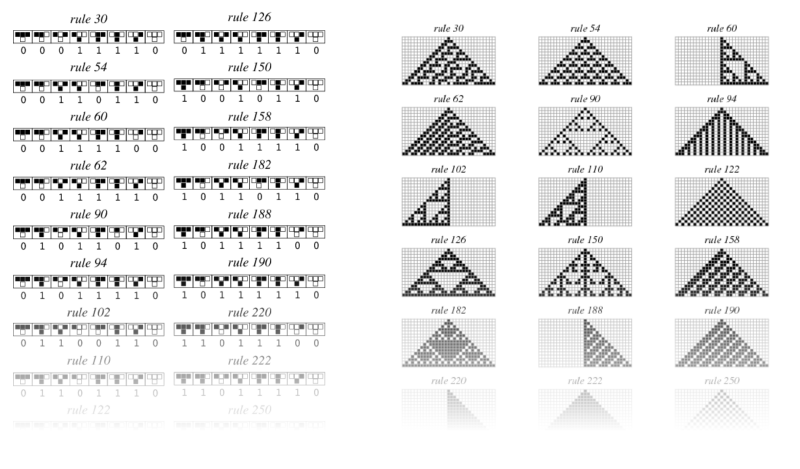< GMU:PCB Arts | L.-E. Kühr
| Line 3: | Line 3: | ||
In this project I wanted to revisit my first-semester project about generating sound using cellular automata. Instead of synthesizing the sound directly from the state of the cellular automata, I wanted to take advantage of using the MIDI-capabilities of the ATmega32U4 microcontroller and design a custom PCB for an Arduino Micro shield which controlls the simulation. The state of the simulation is then send as MIDI over the USB-C port of the Arduino, which can then be used as a MIDI-controller. For the design of the PCB I wanted to take a procedural approach aswell while keeping it simple but taking advantage of all the layers available. | In this project I wanted to revisit my first-semester project about generating sound using cellular automata. Instead of synthesizing the sound directly from the state of the cellular automata, I wanted to take advantage of using the MIDI-capabilities of the ATmega32U4 microcontroller and design a custom PCB for an Arduino Micro shield which controlls the simulation. The state of the simulation is then send as MIDI over the USB-C port of the Arduino, which can then be used as a MIDI-controller. For the design of the PCB I wanted to take a procedural approach aswell while keeping it simple but taking advantage of all the layers available. | ||
[[File: | [[File:all_rules.png|800px]] | ||
==Schematic== | ==Schematic== | ||
Revision as of 04:36, 2 April 2021
GOL-Midi Semesterprojekt
Concept
In this project I wanted to revisit my first-semester project about generating sound using cellular automata. Instead of synthesizing the sound directly from the state of the cellular automata, I wanted to take advantage of using the MIDI-capabilities of the ATmega32U4 microcontroller and design a custom PCB for an Arduino Micro shield which controlls the simulation. The state of the simulation is then send as MIDI over the USB-C port of the Arduino, which can then be used as a MIDI-controller. For the design of the PCB I wanted to take a procedural approach aswell while keeping it simple but taking advantage of all the layers available.
Schematic
PCB
Final Design
Programming
Parts
Video
TBA
